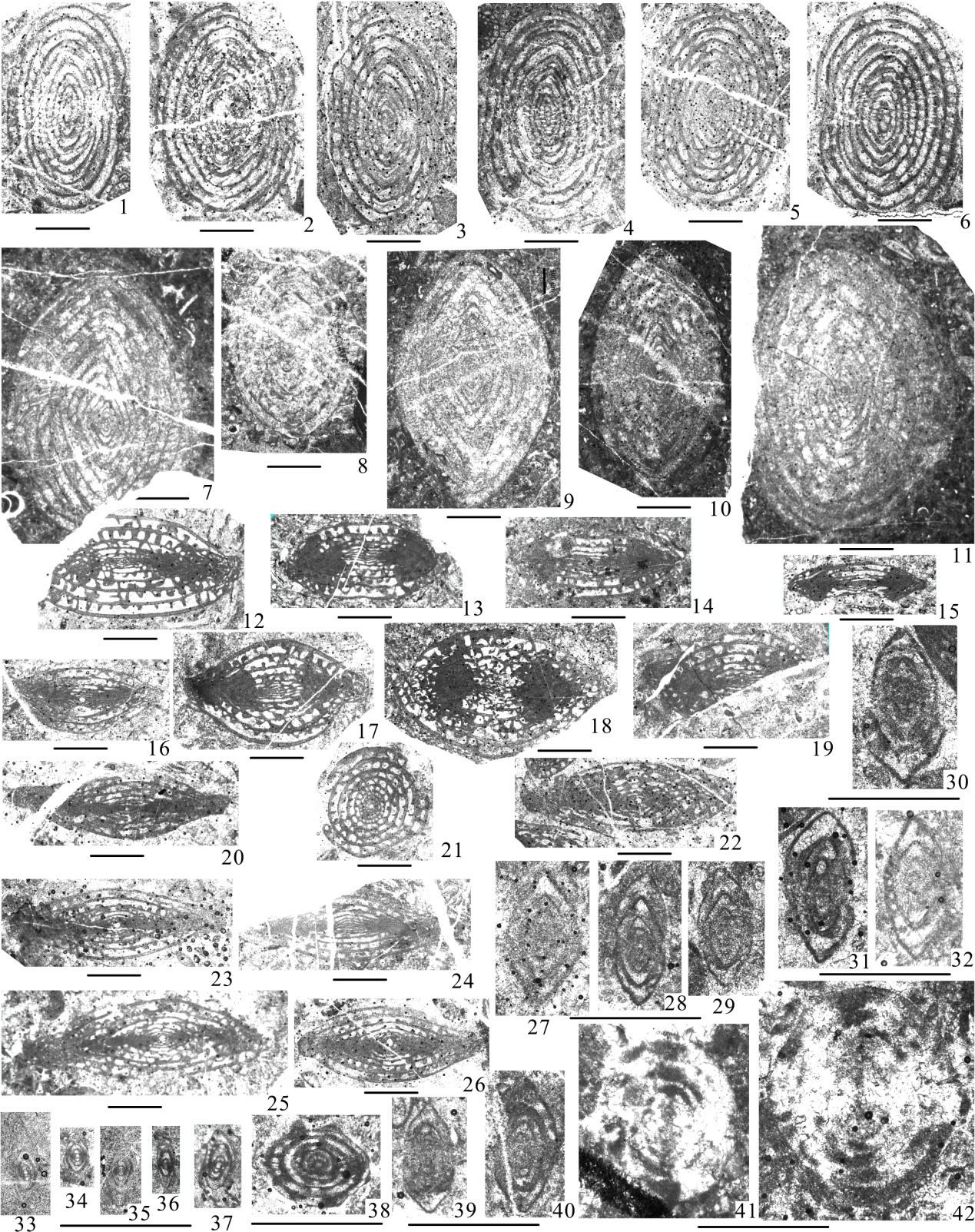
The paleogeographic evolution of the Lhasa Block during the Permian time has been a focused issue. It is closely related to the initial opening time of both the Bangong-Nujiang Ocean and the Neotethys Ocean. The climatic warming after the Permian glaciation and rifting of the Cimmerian continent have resulted in the formation of special paleobiogeographic affinities in different blocks. Thus, the paleobiogeography of the Lhasa Block plays an important role in understanding the opening times for these oceans.
Recently, Prof. ZHANG Yichun and his colleagues from Nanjing Institute of Geology and Palaeontology, Chinese Academy of Sciences, as well as experts from the Chengdu Center, China Geological Survey and Sichuan Geological Survey have given a detailed study of strata and foraminifer faunas from the Xiadong and Zhabuye areas in central Tibet. In this study, the foraminifer genus Shanita has been found in the Zhabuye area. Previously, this genus has been rarely reported from the Xiala Formation in the Xainza area (Zhang et al., 2016). By contrast, Shanita, which associated with Neoschwagerina and Verbeekina, is abundant in the Zhabuye area, that indicated a Middle Permian age. The presence of this genus account for that the Lhasa Block, similar to the South Qiangtang, Baoshan, Tengchong and Sibumasu blocks, was in the Cimmerian Province in paleobiogeography.
Most importantly, the special fusuline Nankinella-Chusenella assembalge was found in the upper part of the Xiala Formation in the Xiadong section. According to available data, this fusuline assemblage occurs only in many sections in the Lhasa and Tengchong blocks such as Xiadong section in Tsochen County, Xiala and Mujiuco sections in Xainza County, Bashor County in eastern Lhasa Block and northern Tengchong Block. And, they have not been reported from adjacent blocks/areas such as South Qiangtang, Baoshan, Sibumasu blocks and northern Indian margin. This special distribution pattern for Nankinella-Chusenella assemblage implies that the Lhasa and Tengchong blocks were isolated from adjacent blocks. Furthmore, the Bangong-Nujiang Ocean in the north and the Neotethys Ocean in the south would have opened before the Middle Permian.
This paper will be published recently in the Journal “Journal of Asian Earth Sciences”.
Middle Permian fusulines from the Xiadong section
Download:
